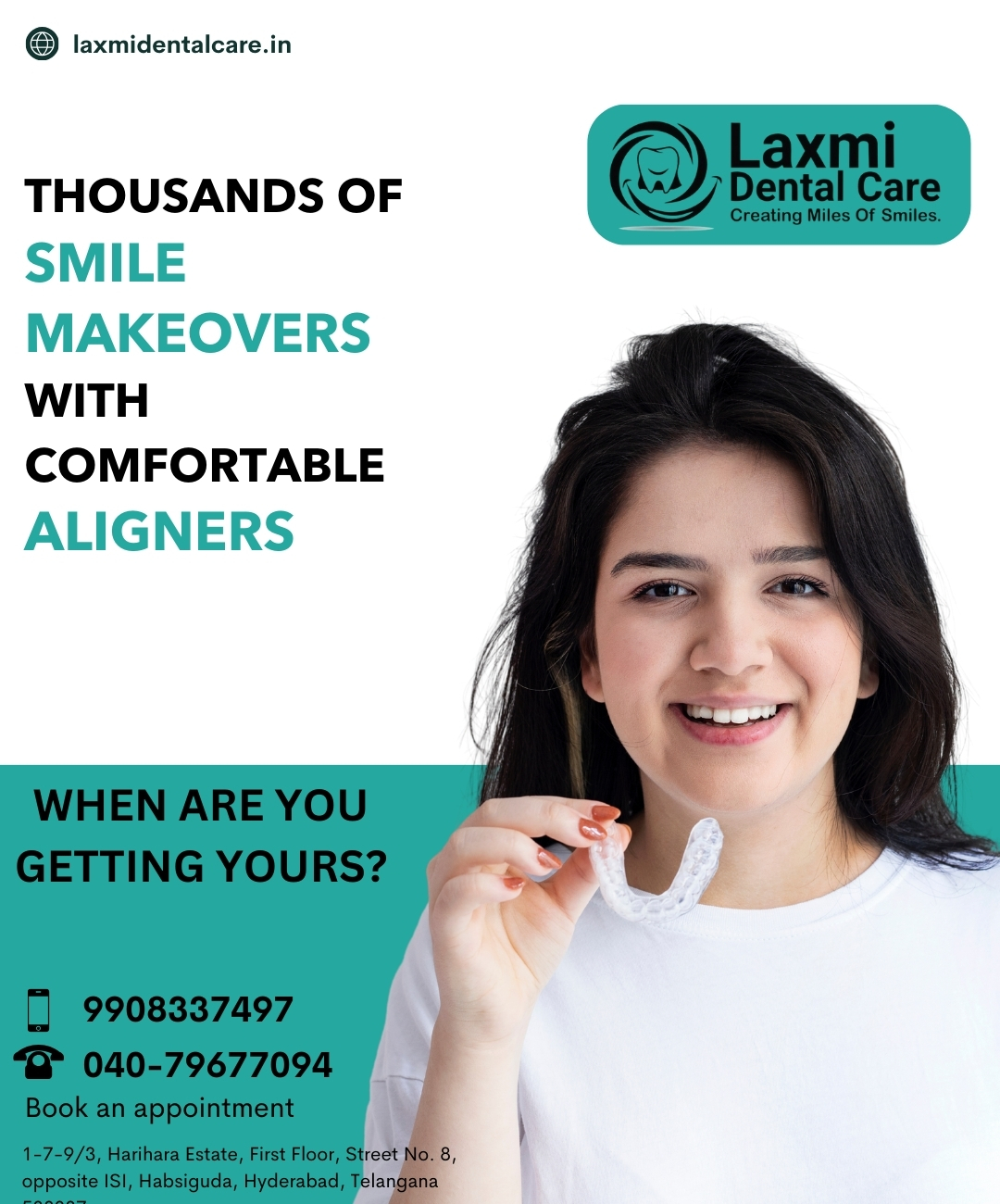Invisalign:Invisalign is a revolutionary orthodontic treatment that offers an alternative to traditional braces for straightening teeth. Invisaligners are clear, custom-made aligners that gradually move teeth into their desired positions. This innovative approach to orthodontics has gained popularity for its discreet nature and convenience.
Key Features of Invisaligners:
Clear and Invisible: One of the most significant advantages of Invisaligners is their transparency. Made from a clear, medical-grade plastic, these aligners are nearly invisible when worn, making them a discreet option for individuals who may be self-conscious about wearing braces.
Customization: Each set of Invisaligners is custom-made for the individual patient. Orthodontists use 3D imaging technology to create a precise digital model of the patient’s teeth, allowing for a personalized treatment plan that addresses their unique needs.
Removability: Unlike traditional braces that are fixed in place, Invisaligners are removable. This feature allows individuals to take them out during meals, making it easier to maintain good oral hygiene and enjoy a diverse range of foods without restrictions.
Comfort: Invisaligners are designed to be comfortable, with smooth edges that reduce irritation to the cheeks and gums. Unlike traditional braces, which can sometimes cause discomfort due to wires and brackets, Invisaligners provide a more comfortable orthodontic experience.
Shorter Treatment Time: While the duration of treatment varies depending on the complexity of the case, some individuals may experience a shorter treatment time compared to traditional braces. Regular check-ups with the orthodontist ensure that the treatment progresses as planned.
Digital Treatment Planning: Invisalign treatment begins with a digital scan of the patient’s teeth, eliminating the need for traditional molds. This digital approach allows for precise treatment planning, visualization of the expected results, and adjustments as needed.
Progress Tracking: Patients receive a series of aligners to be changed approximately every two weeks. Each set of aligners brings the teeth closer to the desired position.
Considerations:
Compliance: Success with Invisalign treatment relies on patient compliance. Aligners should be worn for 20-22 hours per day to achieve the desired results. Failure to wear them consistently may prolong the treatment process.
Cost: Invisalign treatment costs can vary, and it’s essential to consult with an orthodontist to determine the specific needs and associated costs for an individual case.
Invisalign has transformed the orthodontic landscape by providing a discreet, comfortable, and effective alternative to traditional braces. As technology continues to advance, it is likely that Invisalign and similar clear aligner systems will play an increasingly prominent role in orthodontic care.



